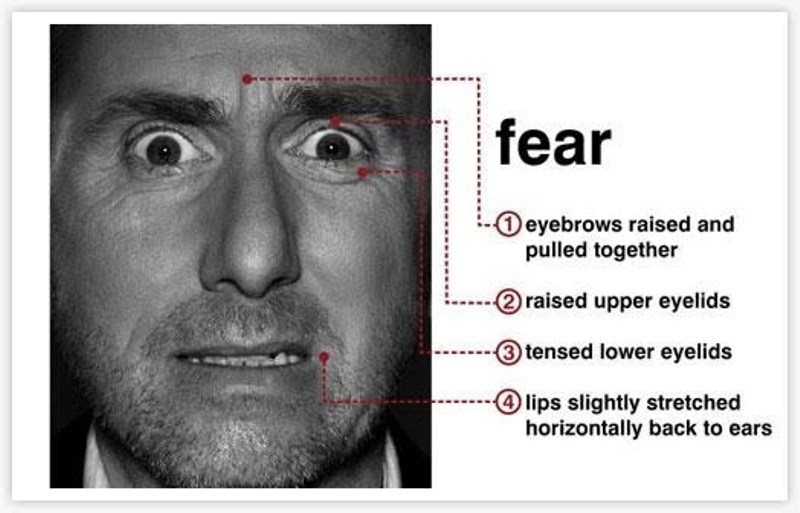
Body language and facial expressions can say a whole lot about what a person is feeling and thinking. If a person is standing near a door with their body angled toward it, they’re most likely feeling anxious and looking for an escape plan. A slight wrinkling of the nose and raising of the upper lip signal that a person is feeling disgusted about the topic of conversation, and a hand curled into a fist is a sign of anger.
Reading body language and learning to look for facial cues can let you know when someone is lying verses when they’re telling the truth. A person may be saying one thing, while their body language and facial expressions are saying another. Learn to read micro expressions, and you might just be able to convince someone that you’re a mind reader!
Facial expressions and body language are largely the same across all nationalities. Regardless of the language someone is speaking, micro expressions are universal, because they are associated with emotions. Micro expressions are very brief facial expressions, lasting only a fraction of a second. They are involuntary reactions that occur when a person is either deliberately or unconsciously hides a feeling. A person may be able to hold their tongue in a certain situation, but they cannot control the natural way their body reacts. A single hint of emotion may flash across a person’s face before they are able to control it, and that’s enough to decipher their true feelings.
Paul Ekman discovered a total of seven universal micro expressions: fear, anger, happiness, sadness, surprise, disgust and contempt.
Here’s how to read them:
1. Fear

Fear Micro expression / Mentalism Pro
- The brow line is raised and drawn together
- The upper eyelids are raise
- The lower eyelids are tensed and raised
- The mouth is open and the lips are drawn back horizontally toward the ears
2. Disgust
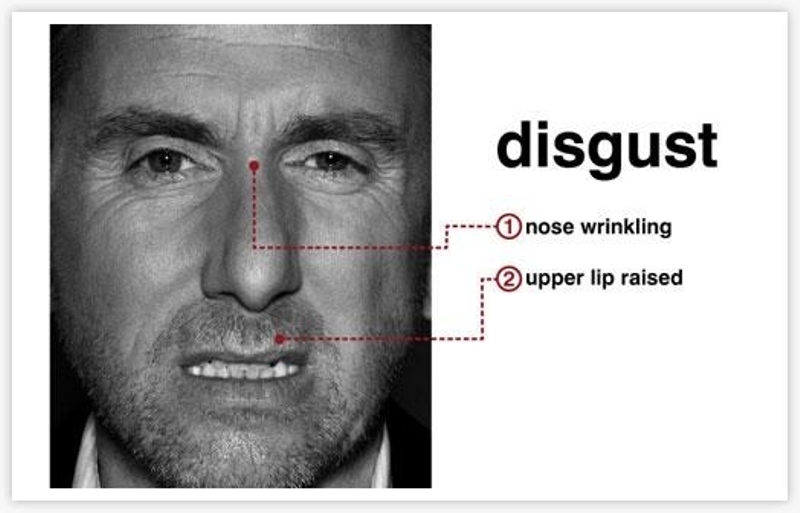
Disgust Micro expression / Mentalism Pro
- The nose is wrinkled
- The upper lip is raised
- The brow line is lowered and tensed
3. Surprise
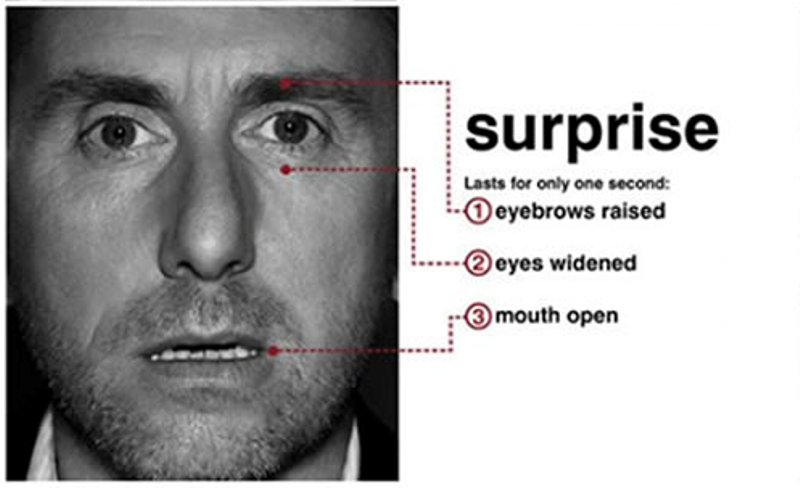
Surprise Micro expression / Mentalism Pro
- The brow line is raised and curved
- The eyes are widened
- The mouth gapes with no tension
4. Contempt
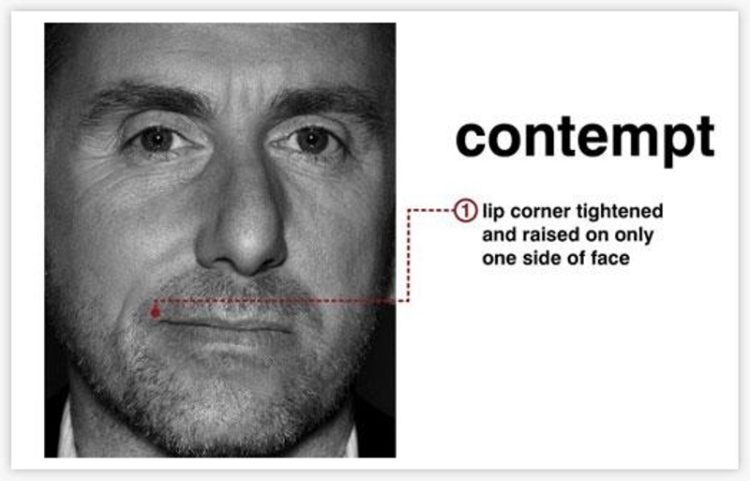
Contempt Micro expression / Mentalism Pro
- One side of the mouth is raised
- Similar to a smirk
5. Happiness
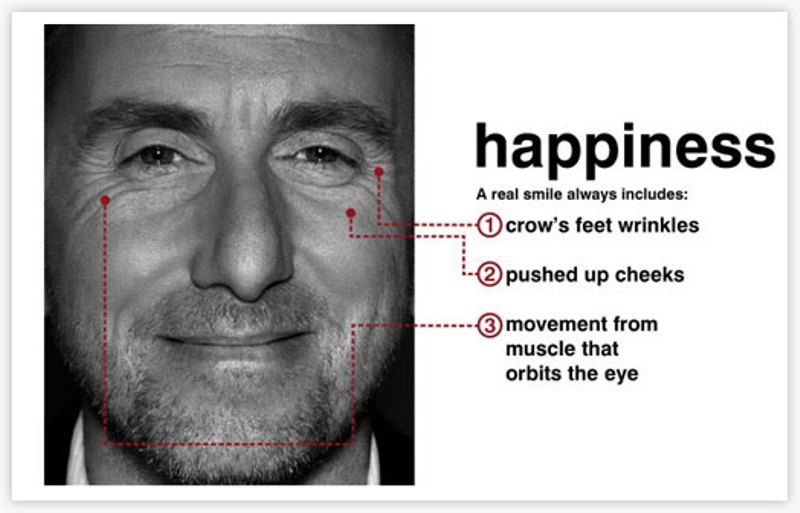
Happiness Micro expression / Mentalism Pro
- The cheeks are raised
- Crows feet appear on the outside of the eyes
- The eye muscles are engaged
- The teeth are usually exposed
6. Sadness
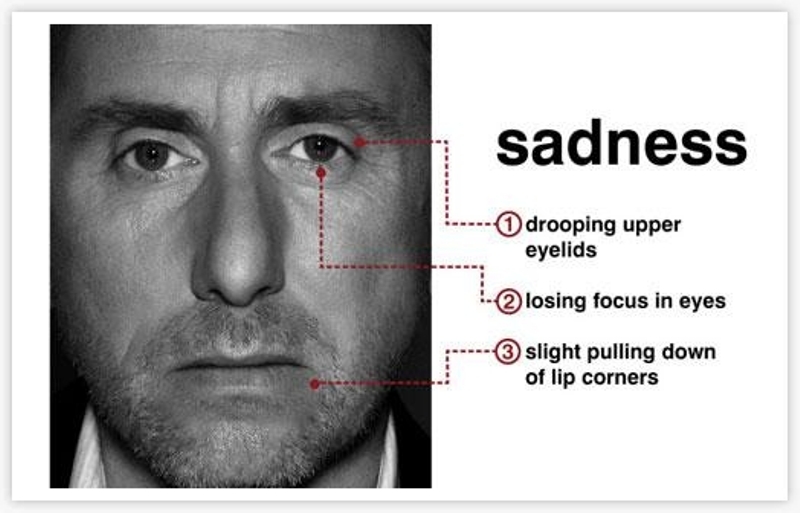
Sadness Micro expression / Mentalism Pro
- The jaw comes up
- The corners of the lips go down
- The upper eyelids droop
- The eyes appear blank
7. Anger
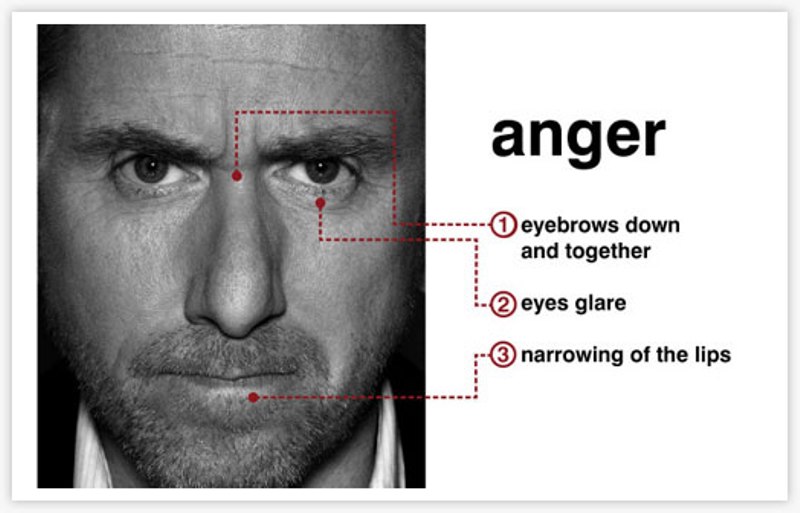
Anger Micro expression / Mentalism Pro
- The lips are pursed
- The eyes have a hard glare
- The brow line is lowered and pulled together
Learning to read micro expressions can help you to decipher someone’s true feelings. One way to use it is to improve your relationships. If a buyer shows contempt during a sales pitch, it may be sign to change your approach. If a friend shows sadness while assuring you that “everything is great,” spend a little extra time with him or her to cheer them up. When someone you love shows true happiness, remember that moment and aim to keep them happy always.
Having the ability to read others’ emotions will increase your connection with them. Common expressions on the face are known as macro expressions. These are easy to fake and may not accurately portray how someone is feeling. Recognizing the more fleeting and evasive expressions that arise allows you to become more sensitive to the real feelings of others.


